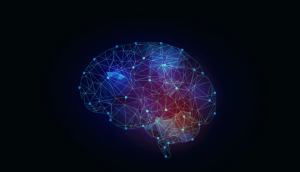In the midst of the controversies surrounding the true efficiency of mindfulness practices, it is good as always to turn to science and see, beyond personal opinions, what research tells us about it.
One of the great discoveries of the late 20th century was that the content of our thoughts, moods, and attitudes can have an impact on the architecture of our brain. All these mental processes take place thanks to a multitude of neurons reaching out and connecting by extending their synapses. The repetition of certain thoughts over time, for example, reinforces the bundling of neurons into specific pathways
Insular Cortex
Among the proven effects of mindfulness, one of the most striking is a structural modification of the insular cortex. The insula is a structure found in both hemispheres, and its major function is to bring back to consciousness perceptions from our own bodies (a process called interception).
A whole category of exercises practiced in mindfulness concerns body awareness, as in observingour breathing, doing what is called a “body scan”or performingslow movements while being fully mindful of our sensations. Research shows that the nsula also plays a fundamental role in integrating information from different brain structures and networks involved in processes as diverse as higher ordercognition, awareness of our emotional states, and the ability to mentalize, namelyto picture in our mind what others are feeling or thinking.
One ofthe disturbing aspects of human thinking is that, contrary tothe popular fantasy of disembodied artificial intelligence, it isactually fully incarnate. Our thinking processes can not be understood aside of our body experience, always rich with sensations and emotions
Our rational mind is, of course, a formidable instrument of analysis, but the complexity of the world is such that its capacities are easily overwhelmed. Whether we are aware of it or not, intuition then takes over. Intuition being this non-verbal form of intelligence, which scans our immense stock of life experiences and knowledge, below the threshold of our awareness, for references that can eventually be useful. Its findings are then brought to our consciousness (the dorsolateral prefrontal cortex), making them accessible to our rational thinking that will evaluate their relevance.
The development of body awareness fostered by mindfulness
Yet it is in a dual awareness of
The practice of mindfulness, therefore, allows a very interesting loop: it promotes the development of interoceptive awareness, which amplifies our ability to be aware of ourselves and others in the present moment (called dispositional mindfulness). Those two processes are highly correlated with psychological well-being and self-confidence.
To put it simply: the more we are in contact with our body sensations and aware of the present moment, the more comfortable we feel and the better we can face reality. By practicing mindfulness (especially the shorter, lighter and fun experiences we sum up in our training programs), we can greatly develop this inner stability and clarity.
References:
Hanley AW, Mehling WE & Garland EL, Holding the body in mind: Interoceptive awareness, dispositional mindfulness, and psychological well-being, J Psychosom Res.2017 Aug;99:13-20.
Gibson J, Mindfulness, Interoception, and the Body: A Contemporary Perspective, Front Psychol. 2019 Sep 13;10:2012.












